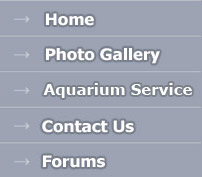The adults of this species are brownish to black in color with the females and juveniles sometimes being cream or yellow. The coloration may change in the aquarium and is highly dependent on the colors of its environment.They are found in parts of the Western Pacific, from the Red Sea up to Japan.
The Great Seahorse does best when kept as either a mated pair, or with a small group of its own kind in a species-only aquarium of 50 gallons or larger. The Great Seahorse will get along well with small, shy fish such as gobies, Ocellaris and Percula clownfish, and firefish. But aggressive, territorial fish or fast-moving fish do not make good companions. The Great Seahorse spends most of its time clinging to seagrass and rocks with its prehensile tail rather than swimming. You'll need plenty of live rock, adequate skimming, low water currents and plenty of places for them to hold onto. Hippocampus kelloggi can grow to almost 11 inches (28 cm), so it needs a larger tank.
Fast, aggressive fish will out-compete the Great Seahorse for food. When first introduced into the aquarium, live saltwater feeder shrimp should be used to entice this fish to eat. The Tank-Bred Seahorse is a slow eater and is commonly fed frozen mysis shrimp, making it a smart alternative to its wild-caught counterparts. The Great Seahorse will also feed upon amphipods and other small crustaceans found in live rock. It will accept vitamin-enriched adult brine shrimp, but this should not make up a majority of their diet. The Great Seahorse is a slow, deliberate feeder and prefers two or more small feedings per day.





